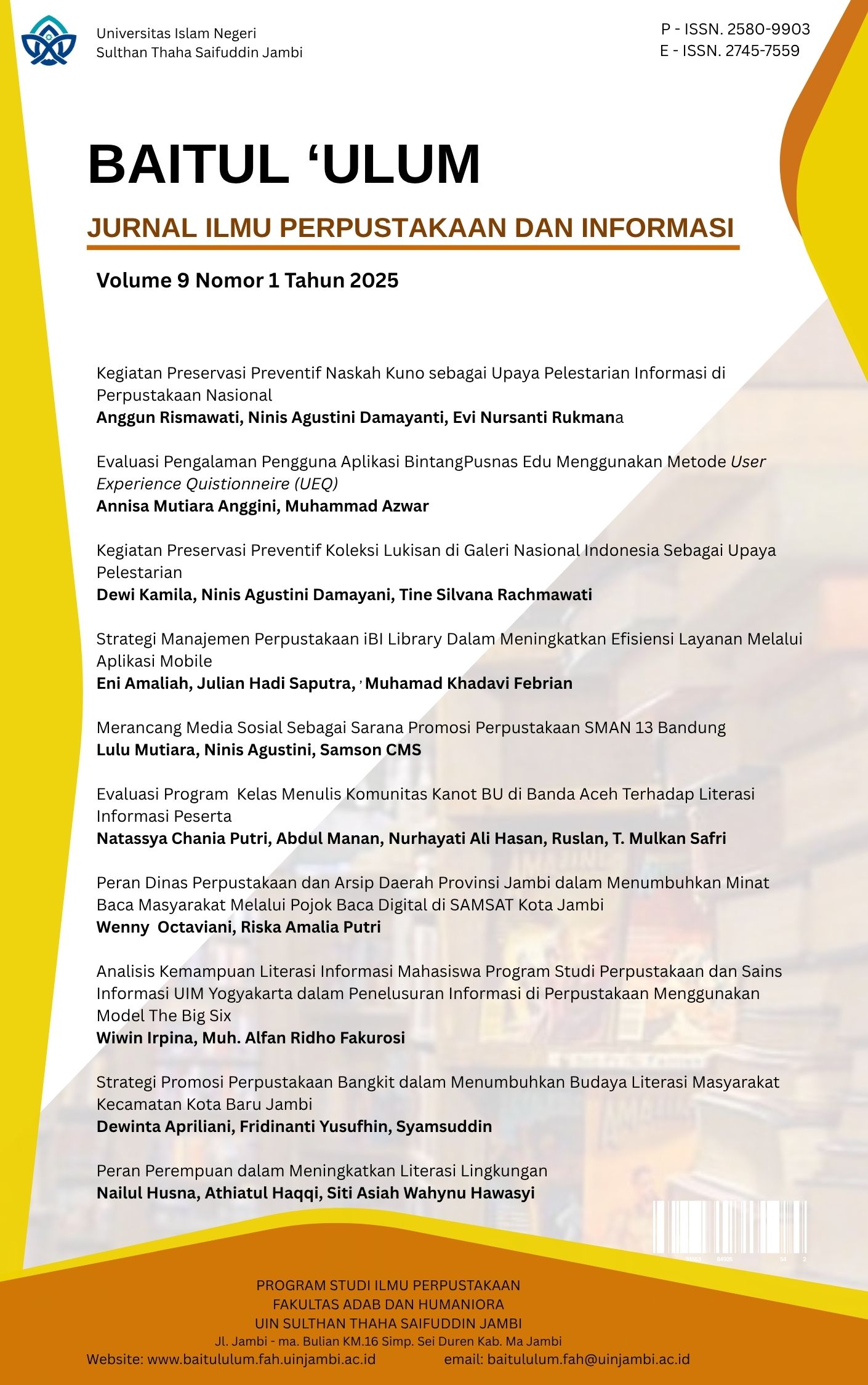Kegiatan Preservasi Preventif Koleksi Lukisan di Galeri Nasional Indonesia Sebagai Upaya Pelestarian
Abstract
This research examines the implementation of preventive preservation activities for the painting collection at the Indonesian National Gallery (GNI) as a form of preserving national cultural heritage. The importance of this study lies in the urgency of protecting national collection paintings from the threat of damage due to environmental, handling and institutional factors. The method used is a qualitative descriptive approach with data collection techniques through observation, interviews and documentation studies. Data analysis was carried out using the Miles and Huberman model of content analysis techniques and data triangulation to ensure the validity of the findings. The research results show that preventive preservation activities at GNI have been carried out through careful collection packaging, storage space control, and documentation of collection conditions, but are still not standardized as a whole. The main problems lie in limited microclimate control, uneven distribution of facilities, and the absence of SOPs and sustainable preventive financing. The conclusion of this research states that the implementation of preventive preservation at GNI is still partial. Institutional policies, special budgets, as well as improvements in infrastructure and human resource capacity are needed to create a systematic and sustainable preservation system. This research recommends the preparation of preservation policies that are integrated with institutional policies and technical practices in the field.


1.png)
